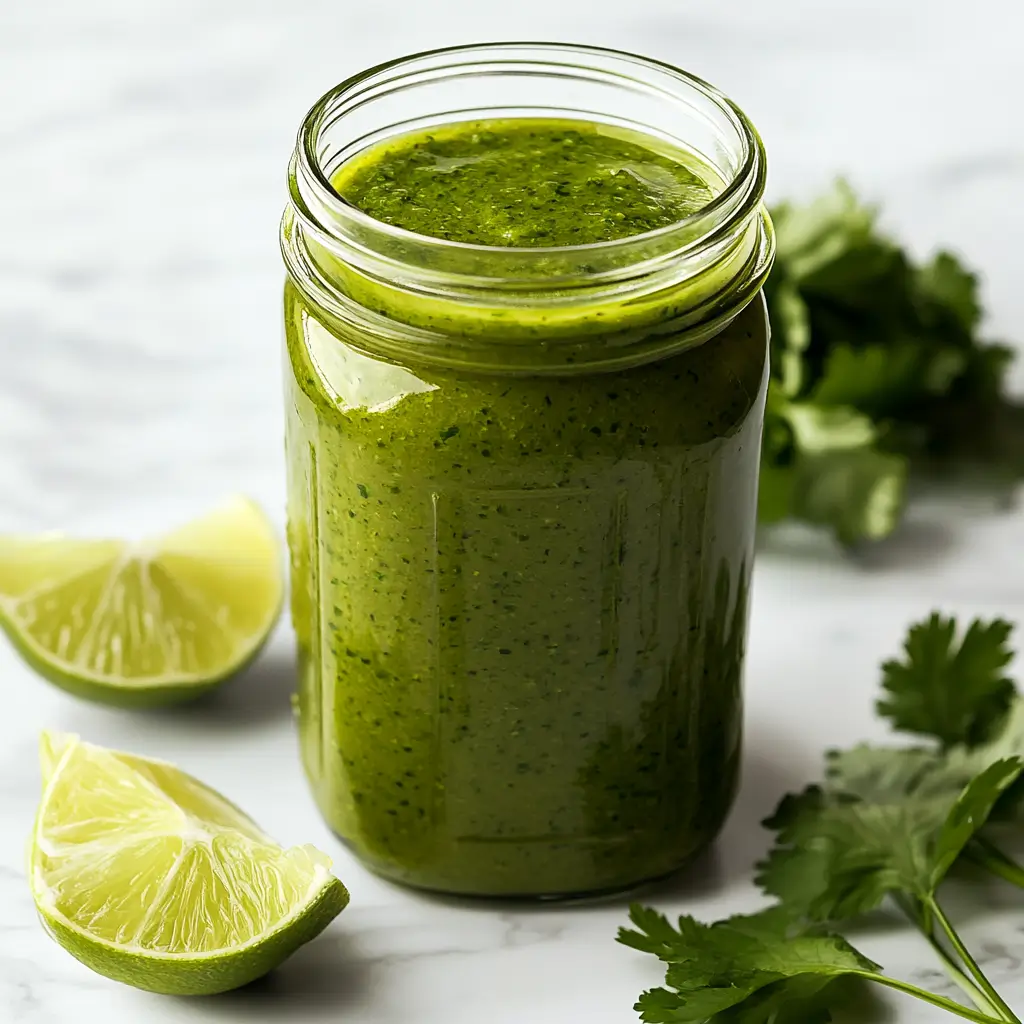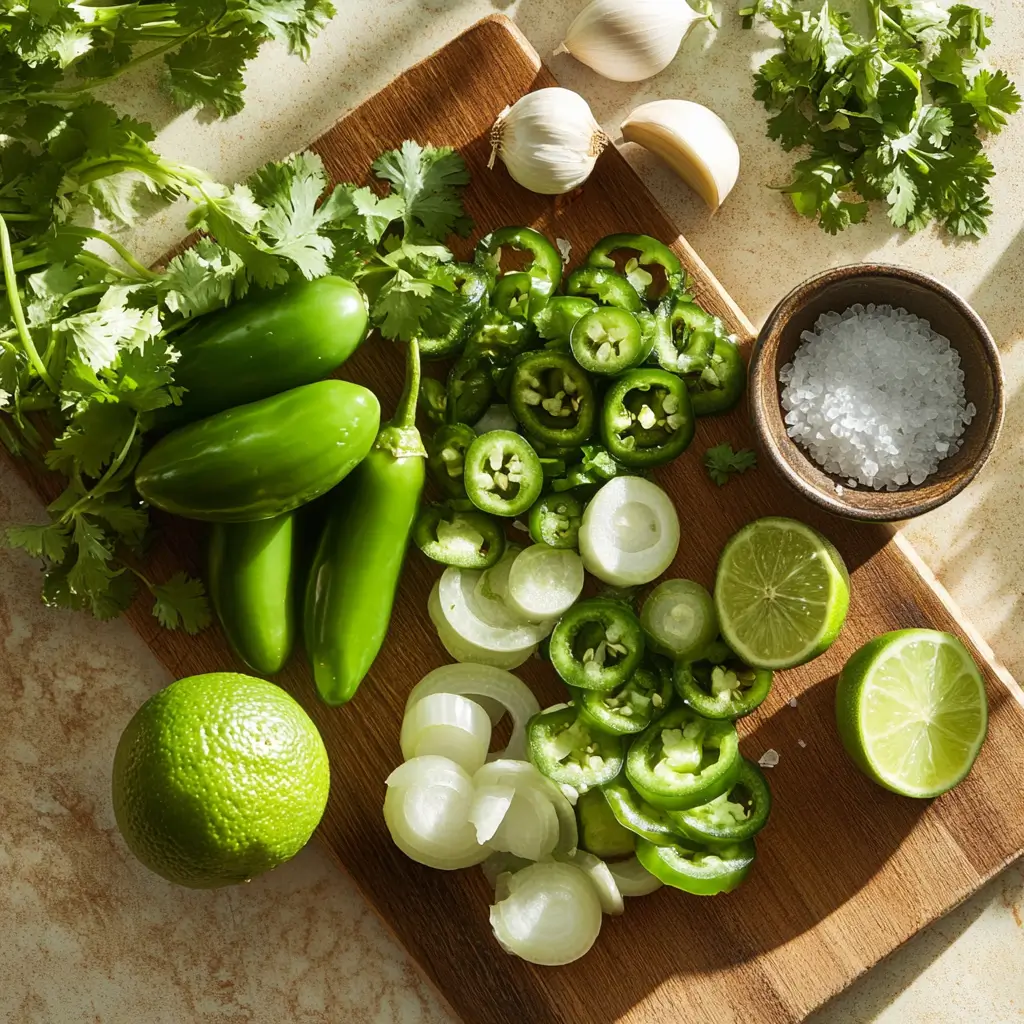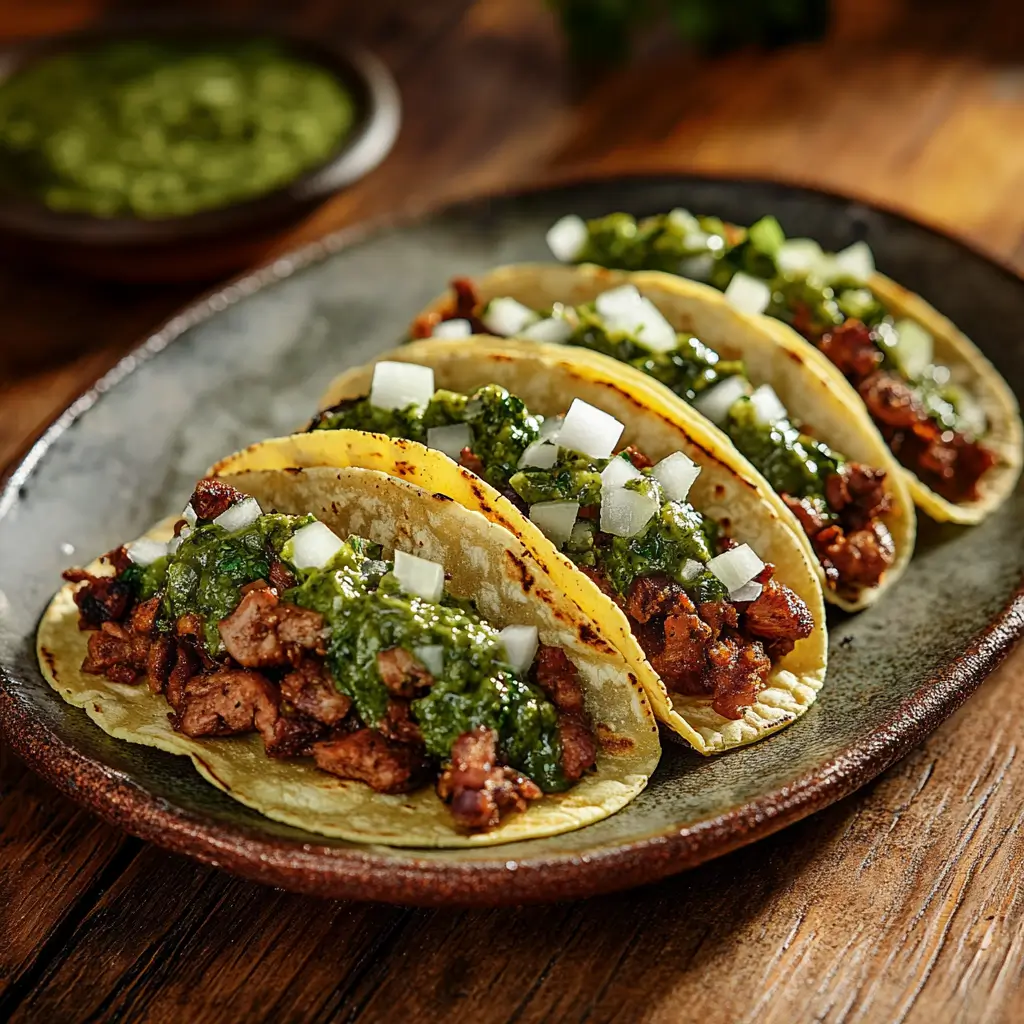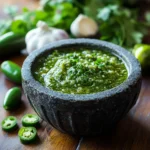There’s something magical about that first bite of a street taco. The warm tortilla hugs flavorful meat, a sprinkle of onions adds crunch, and suddenly, a bold green drizzle brings the whole thing to life. That green drizzle is none other than green taco sauce, the unsung hero that lifts ordinary tacos into unforgettable bites.
As a matter of fact, green taco sauce has deep roots in traditional Mexican cuisine. It’s tangy, spicy, herbal, and just the right amount of citrusy. Because of its flavor balance, it complements pork, beef, grilled vegetables, and even scrambled eggs. Therefore, it’s not just a condiment—it’s a game-changer in the kitchen.
We’re diving deep into everything you need to know about this flavorful sauce. We’ll walk through the ingredients, prep steps, regional varieties, and expert tips that will have you whipping up your own batch in no time. Moreover, you’ll understand what makes green taco sauce different from salsa verde or red taco sauce and why you’ll want a jar of it in your fridge at all times.
How to Make Green Taco Sauce at Home

You don’t need a professional kitchen to create restaurant-worthy green taco sauce. In fact, with a blender and a few fresh ingredients, you can make a delicious batch right at home. The process is quick, the ingredients are affordable, and the results are undeniably impressive.
Although green taco sauce may sound exotic, its core ingredients are familiar to most home cooks. Tomatillos, jalapeños, garlic, onion, lime, and cilantro come together to form the base. The flavor is bright and bold, which explains why it’s a favorite in taco stands across Mexico and the United States.

Before we dive into the steps, let’s take a look at what you’ll need.
Ingredients Table
| Ingredient | Amount | Notes |
|---|---|---|
| Tomatillos | 1 lb | Husked, rinsed, and dried |
| Jalapeños | 2–3 | Leave seeds for heat or remove for mild |
| Garlic cloves | 2–3 | Roast with skins on |
| White onion | ½ medium | Peeled and quartered |
| Fresh cilantro | ½ bunch | Trim stems if preferred |
| Lime juice | 2 tbsp | Freshly squeezed |
| Salt | To taste | Sea salt for best results |
| Olive oil | 1 tbsp | Optional for creamier texture |
Additionally, you can substitute serrano peppers for jalapeños if you prefer more heat. You can also add avocado or sour cream for a creamy version, which we’ll explore later in this article.
Step-by-Step Instructions for the Perfect Sauce
This recipe involves just a few steps, but each one plays a vital role in building bold, layered flavor. So, take your time and don’t skip the roasting—it transforms the sauce completely.

Step 1: Roast Your Vegetables
Preheat your broiler to high. Line a baking sheet with foil or parchment paper. Place your tomatillos, jalapeños, garlic cloves (still in skins), and onion quarters in a single layer.
Roast for 6–8 minutes or until they start to char and soften. Turn them halfway through to ensure even roasting. Afterward, remove them from the oven and let them cool for a few minutes.
Roasting adds smokiness and caramelizes the natural sugars in the vegetables. Although raw tomatillos can be used, roasting enhances the sauce’s depth.
Love bold, rich flavors? Then you’ll want to try this incredible birria taco sauce recipe—a perfect companion to your taco nights and a must-have for fans of authentic, slow-cooked sauces.
Step 2: Blend Until Smooth
Once your roasted vegetables have cooled, peel the garlic and transfer all roasted items into a blender. Add cilantro, lime juice, salt, and olive oil if using. Blend until smooth. If it’s too thick, add a few tablespoons of water to adjust the consistency.
This sauce should be smooth but not watery. It needs to coat a taco without dripping everywhere. Therefore, start blending in short pulses and gradually increase the speed until it looks velvety.
Step 3: Chill and Let Flavors Set
Pour your sauce into a glass jar or sealed container. Chill for at least 30 minutes. During this time, the garlic softens, the citrus blends, and the spice mellows out.
Although it’s tempting to use it immediately, this resting time makes a huge difference. As I have noted before, letting the sauce sit helps the flavors settle into harmony.
Looking for a flavorful, plant-based twist? Don’t miss this delicious vegan teriyaki sauce—it’s sweet, savory, and perfect for stir-fries, bowls, and more.
Step 4: Refine Texture and Flavor
Once you’ve blended the roasted ingredients, taste your sauce. If it feels too sharp, then add a pinch of sugar or a bit more lime to balance the tang. Conversely, if it’s watery, blend in a quarter avocado or another tomatillo to thicken it slightly.
Consistency matters because the ideal green taco sauce should cling to your tacos without soaking the tortilla. Therefore, aim for a spoon-coating texture that isn’t overly runny. You can adjust the thickness by blending longer or adding small amounts of water until it’s just right.
Step 5: Serve with Style
After chilling your sauce for at least 30 minutes, spoon it over freshly prepared tacos. Alternatively, use it as a dip for chips or a dressing for taco salads. Additionally, it pairs well with breakfast items like scrambled eggs or breakfast burritos.
Moreover, consider drizzling it on roasted sweet potatoes or grilled corn. The brightness cuts through starchy foods and complements caramelized flavors perfectly.

Smart Storage Tips
Store your green taco sauce in a tightly sealed glass jar in the refrigerator. Consequently, it stays fresh for up to five days. Because oil and acidity preserve the ingredients, the sauce rarely spoils quickly.
For long-term storage, pour the sauce into silicone ice cube trays, freeze overnight, then store the cubes in a zip-top freezer bag. Therefore, you can thaw just what you need without waste.
In addition, sterilizing your jars allows for longer refrigerated storage. However, remember that homemade sauces without preservatives should be used sooner for best flavor and safety.
Regional Flavors Across Mexico
Although green taco sauce follows a common foundation, it changes from region to region in Mexico. These local variations give each version a personality of its own.
Northern Mexico
In the north, sauces tend to be spicier and thicker. Serrano or chile de árbol peppers are common. Additionally, they often skip the lime and go heavy on roasted garlic.
This version works well with carne asada or beef barbacoa. The smoky, bold flavor cuts through the richness of grilled meats.
Central Mexico
Central Mexican green sauces often lean brighter. They use more lime and onion and occasionally skip the roasting. As a result, the flavor is fresher, with a zippy kick that wakes up the palate.
These sauces are typically thinner and used for carnitas or breakfast tacos with scrambled eggs.
Yucatán Region
In the Yucatán, you’ll find sauces using habanero and sour orange juice. Although it’s quite spicy, the sweet citrus keeps it balanced.
Flavor Boosters, Variations & Expert Tips
Because everyone loves to add their personal touch, here are tested ways to elevate your green taco sauce. Not only do these ideas keep things exciting, but they also help you use what’s already in your fridge.
Pro Tips to Upgrade Your Sauce
- Let the Sauce Sit Overnight
Letting your green taco sauce rest overnight allows the garlic and lime to mellow while the herbs infuse. As a result, you get a smoother, deeper flavor profile. - Blend in Some Sweetness
For a slightly sweet contrast, add a few chunks of grilled pineapple or a roasted green apple before blending. This tip works especially well when pairing with spicy meats. - Layer Heat Intelligently
Instead of just tossing in more chiles, try using one serrano and one jalapeño. Consequently, this creates complexity without overwhelming spice.
Creative Variations to Try
- Creamy Avocado Version
Add half a ripe avocado during blending. Thus, the sauce becomes silkier and mild, perfect for seafood or breakfast tacos. - Yucatán-Inspired Citrus Sauce
Replace half the lime juice with orange juice or sour orange for a Yucatán-style profile. This version works beautifully with pork and grilled shrimp. - Smoky Verde Twist
Roast one poblano pepper and one garlic bulb until blackened, then blend into the base sauce. Consequently, you’ll get a mellow, smoky richness.
What Makes Green Taco Sauce Unique?
Now that you’ve mastered the basic recipe, let’s explore why green taco sauce stands apart. It’s often confused with salsa verde, but the two serve different roles in Mexican cuisine.
Salsa Verde vs. Green Taco Sauce
Salsa verde is generally thinner and often served with chips or poured over enchiladas. It can be raw or cooked. Meanwhile, green taco sauce is made specifically for tacos. It’s thicker, smoother, and clings to proteins better.
While both use tomatillos and green chiles, taco sauce is usually roasted and blended to a thicker consistency. It also includes more lime, sometimes oil, and often a touch of sweetness.
Moreover, salsa verde tends to be brighter and more acidic. Green taco sauce leans deeper, earthier, and slightly richer—ideal for tacos with grilled meats or bold seasonings.
Creamy and Vegan-Friendly Variations
Because everyone has different dietary needs, green taco sauce can be easily adapted. For a creamy version, add half an avocado before blending. You’ll get a silky texture that’s perfect for fish tacos or veggie wraps.
Alternatively, you can stir in a spoonful of sour cream or Greek yogurt after blending for a tangy, smooth result. These versions are excellent for kids or those who prefer milder spice.
If you’re aiming for a vegan sauce, simply use avocado or cashew cream in place of dairy. Also, swap olive oil with a neutral oil like avocado oil for a lighter taste.
FAQs About Green Taco Sauce
Because green taco sauce is versatile and beloved, it’s no surprise that home cooks have a lot of questions. Here are the most common ones, answered clearly and completely.
What is the green stuff on street tacos?
That bright green topping is usually green taco sauce. Sometimes it’s a raw tomatillo salsa, but more often, it’s a roasted blend of tomatillos, chiles, garlic, and cilantro. Additionally, it might be creamy or spicy, depending on the region or taquería.
Is Mexican green sauce the same as salsa verde?
Although they share ingredients, they differ in use. Salsa verde is often raw and spooned over chips or meats. Conversely, green taco sauce is usually blended smooth and made specifically for topping tacos.
Moreover, taco sauce often includes lime, oil, or avocado to ensure it clings better to tortillas and fillings.
What’s the difference between red and green taco sauce?
Red taco sauce typically uses tomatoes or dried red chiles like guajillo. It’s smoky and sweet. Green taco sauce uses tomatillos and fresh green chiles, creating a tangy and herbaceous taste.
As a result, red sauce pairs well with grilled beef or pork, while green complements lighter or spicier proteins like fish or carnitas.
What peppers are used in green taco sauce?
Green taco sauce usually features jalapeños, serranos, or a combination of both. Occasionally, poblano or banana peppers are added for variety.
Because each pepper offers a different level of heat, you can customize your sauce accordingly. Moreover, roasting the chiles before blending reduces harshness and builds flavor.
Can I make it less spicy for kids or guests?
Absolutely. Use one jalapeño with seeds removed or swap in a mild green bell pepper. Additionally, blending in avocado or sour cream tames the heat while enhancing creaminess.
Moreover, skipping raw garlic and using roasted garlic softens the bite, which makes it more appealing to children and sensitive palates.
Is green taco sauce good for vegetarian or vegan diets?
Yes! In fact, the base recipe is 100% vegan. You can enhance it with avocado, olive oil, or plant-based sour cream.
Because it’s plant-based, nutrient-dense, and low-calorie, it’s an excellent addition to health-conscious cooking.
Conclusion: Why Green Taco Sauce Belongs in Your Kitchen
To summarize, green taco sauce is one of the most flavorful, adaptable condiments in Mexican cooking. It brings together roasted tomatillos, green chiles, garlic, and lime into a tangy, spicy, and vibrant topping that enhances everything it touches.
Because it’s easy to make, endlessly customizable, and loaded with fresh ingredients, there’s no reason not to keep a jar in your fridge. Whether you drizzle it on tacos, stir it into grain bowls, or use it as a dipping sauce, it delivers maximum flavor with minimum fuss.
So next time taco night rolls around, skip the store-bought bottle. Instead, make your own green taco sauce and taste the difference that freshness and fire-roasting bring to your plate.
Table of Contents

Green Taco Sauce: The Zesty Secret Behind Authentic Street Tacos
- Total Time: 20 minutes
- Yield: About 1½ cups
Description
This homemade Green Taco Sauce is a bold, zesty blend of roasted tomatillos, jalapeños, garlic, and lime—perfect for elevating tacos, burritos, or even chips. With just a handful of fresh ingredients and a blender, you’ll have a vibrant, flavorful sauce that tastes just like it came from your favorite taco stand. The smoky, citrusy punch makes it a standout condiment for any Mexican-inspired dish.
Ingredients
1 lb tomatillos, husked, rinsed, and dried
2–3 jalapeños, seeds removed for mild or left in for heat
2–3 garlic cloves, unpeeled
½ medium white onion, peeled and quartered
½ bunch fresh cilantro, stems trimmed if preferred
2 tbsp freshly squeezed lime juice
Salt, to taste (preferably sea salt)
1 tbsp olive oil (optional, for a creamier texture)
Instructions
Roast the vegetables:
Preheat your broiler to high. Line a baking sheet with foil or parchment paper. Place tomatillos, jalapeños, garlic (in skins), and onion on the sheet. Roast for 6–8 minutes, turning halfway through, until lightly charred and softened.Blend the ingredients:
Let the roasted vegetables cool slightly. Peel the garlic. Transfer all roasted items to a blender along with cilantro, lime juice, salt, and olive oil (if using). Blend until smooth. Add water a tablespoon at a time if the sauce is too thick.Chill the sauce:
Pour the blended sauce into a glass jar or sealed container. Chill in the refrigerator for at least 30 minutes to allow flavors to meld.Refine texture and balance:
Taste the chilled sauce. If too sharp, add a pinch of sugar or more lime. If too watery, blend in ¼ avocado or another tomatillo. Adjust thickness and flavor to your liking.
Serve and enjoy:
Spoon the sauce over tacos, burritos, or grilled vegetables. Also great as a dip for chips or a topping for scrambled eggs and taco salads.
Notes
For a spicier sauce, substitute serrano peppers for jalapeños.
For a creamy variation, add ½ avocado or 1–2 tbsp sour cream before blending.
Store in an airtight container in the fridge for up to 5 days or freeze for longer storage.
- Prep Time: 10 minutes
- Cook Time: 10 minutes
- Category: Lunch
- Cuisine: Mexican
Nutrition
- Calories: 25
- Fat: 1.5g
- Carbohydrates: 3g
- Protein: 0.5g

4 thoughts on “Green Taco Sauce: The Zesty Secret Behind Authentic Street Tacos”